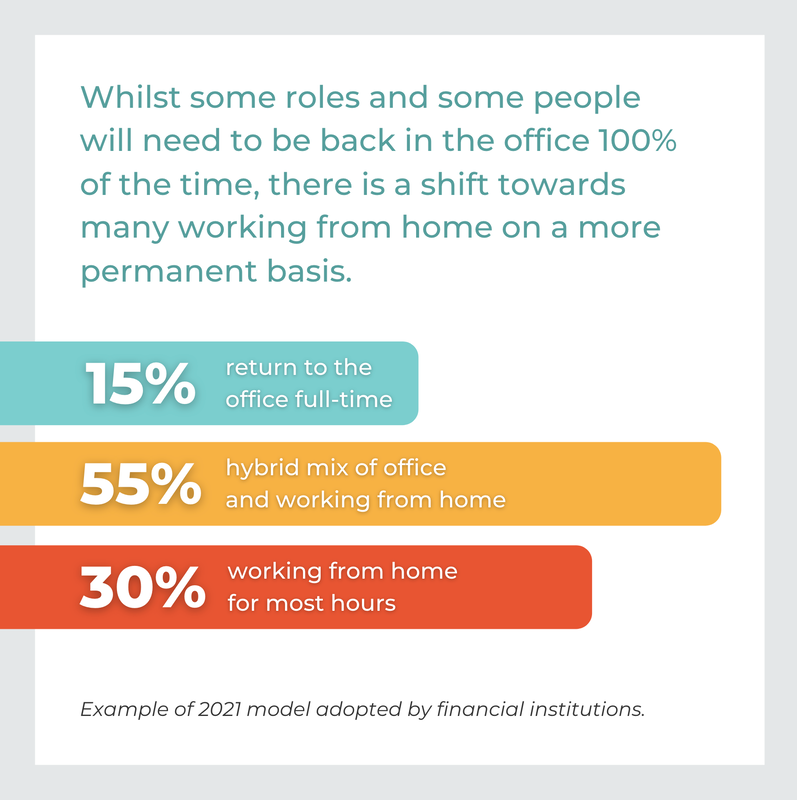|
Health and safety when working from home Six months since the introduction of COVID-19 restrictions, it feels like the whole world is working from home. Are you aware of the physical health risks involved during prolonged home-working? In this article, we take you through ways to ensure that your (or your employees’) home working environment is safe. How many Brits worked from home before the COVID-19 outbreak? According to the Office for National Statistics, just 5% of the UK’s active 32.6 million workers (1.63 million) considered their home as their main place of work in 2019. The figure grew to 4 million (12.26%) when factoring in those who work in part from home. In April 2020, as businesses and workers adjusted to the realities of COVID-19, the ONS found that 15.19 million people were working from home in some capacity. That’s 46.6% of all people in employment. This is a huge increase and a new landscape for everyone, with employers and workers persevering to adapt and figure out the best practices going forward. With many businesses reluctant to reopen while the pandemic continues, and one third of young British workers saying they expect to work from home after the pandemic, the trend is likely to continue into the future. So, it seems like we are not going to be returning to our offices any time soon. How can home workers look after their physical health while working from home, then? Similarly, how can businesses make sure they do everything they can while their staff work from home? If you’re experiencing discomfort, don’t ignore the symptoms
Since the beginning of the pandemic, millions of workers experienced an unprecedented shift in their day-to-day routines without full consideration of what that means. Many have found themselves working in improvised, often unhealthy setups – stooped over kitchen tables, sat on sofas with their laptop or even perched on the edges of beds. While the WFH trend continues, it might not occur to people that there is a relationship between working conditions, poor posture and pain. Whether it's lower back, neck or muscle pain, these initial symptoms can be subtle and slow to come on. They can also seriously impact your health down the line if they aren't recognised early enough. That’s why it’s very important for both home-workers and employers to make sure that care is taken to create an adequate working environment. If you’re the one working from home, it’s vital to listen to your body and treat any aches and their causes as soon as you become aware of them. You should also tell your employer about any health and safety risks and home working arrangements that need to change. Occupational health and home-working guidelines From an employer perspective, there are occupational health considerations and workplace risks your WFH policy might not yet cover, including physical health risks and inadequate insurance. Under the Health and Safety at Work etc. Act 1974, employers are expected to take reasonable care for employee safety when working at home. What does this mean, exactly? While it might not be possible to carry out a full health and safety assessment at your employees’ homes just now, you need to make sure that each member of staff feels the work they're being asked to do can be done safely. The right equipment to work safely is a must, too. Employers should be asking employees to undertake a self-assessment checklist before setting them up for remote work. For example, asking your employee to check they’ve got an appropriate chair and whether their desk is at the right height. If you’re self-employed and working from home, this list is just as relevant to you. Working from home checklist Here are some examples of self-assessment questions for employees:
Taking steps to protect mental health In addition to the physical challenges of working from home, employers should be in regular contact with staff, making sure they do not feel isolated. Consider how you can support your employees to combat the potential psychological challenges of COVID-19. This means investing the time to connect with your employees and offer reassurance. In these unprecedented times, there is some good news: together, we can help each to adapt, and to create healthy and comfortable work environments for the future. What to do next... Your free physiotherapy assessment is waiting. Working from home or in a different way can lead to physical pain or discomfort. PhysioWizard® Lite is a fast and easy online assessment to help you alleviate your symptoms. Trusted by National Healthcare providers, for a limited time we are offering PhysioWizard® Lite free to the public and employers. By supporting our businesses, community, and healthcare professionals, we hope to reduce pressure on frontline staff and services, and empower people to help themselves.
0 Comments
|






